Best African Safaris & Travel Services – African Authentic Safaris Ltd
1-Day Uganda Wildlife Education Centre-Entebbe Tour
from 0 review
Day Trip
Daily Tour
Unlimited
___
Description
Discover Uganda’s remarkable wildlife heritage with our 1-Day Uganda Wildlife Education Centre (UWEC) Tour in Entebbe. Often referred to as “Entebbe Zoo,” this expansive 72-acre wildlife sanctuary offers much more than a traditional zoological experience – it serves as a vital rescue and rehabilitation center, conservation education facility, and breeding sanctuary for Uganda’s diverse fauna. Set on the picturesque shores of Lake Victoria, UWEC provides a unique opportunity to observe rescued animals in naturalistic habitats while learning about Uganda’s conservation challenges and successes. From majestic big cats and primates to rare bird species and reptiles, the Centre houses over 250 indigenous animal species including many that have been rescued from traffickers or conflict situations. Our expertly guided tour offers fascinating insights into animal behavior, conservation strategies, and Uganda’s broader ecosystem health. Perfect for families, wildlife enthusiasts, photographers, and anyone seeking to understand Uganda’s natural heritage, this accessible day trip combines education, entertainment, and conservation awareness in a beautiful lakeside setting just minutes from Entebbe’s town center.
Highlights
- · Observe rescued lions, leopards, and cheetahs in spacious, naturalistic enclosures
- · Encounter Uganda’s diverse primate species including chimpanzees and various monkeys
- · Witness impressive shoebill storks and numerous other indigenous bird species
- · Learn about wildlife rescue and rehabilitation from knowledgeable conservation guides
- · Experience up-close animal encounters during special feeding programs (schedule dependent)
- · Support conservation education through your entrance fees
- · Enjoy the scenic Lake Victoria shoreline with picturesque viewpoints
- · Photograph animals in well-designed habitats with natural backdrops
- · Behind-the-scenes tours of veterinary facilities and rehabilitation areas (optional)
- · Convenient location just minutes from Entebbe town center and international airport
Detailed Itinerary
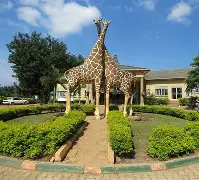
Morning Tour Option (08:30 AM - 01:00 PM)
08:30 AM: Pick-up from Entebbe Accommodation
· Meet your knowledgeable wildlife guide at your Entebbe hotel or residence
· Short briefing about the day’s schedule and UWEC’s conservation mission
· Comfortable transfer to the Wildlife Education Centre (5-15 minutes depending on location)
09:00 AM: Arrival at Uganda Wildlife Education Centre
· Welcome orientation at the visitor center
· Introduction to UWEC’s history, from traditional zoo to conservation center
· Overview of rescue and rehabilitation programs
· Tour plan customization based on group interests
09:30 AM - 12:30 PM: Guided Wildlife Tour
· Big Cats Section: lions, leopards, and cheetahs with information on their conservation status
· Primates Area: chimpanzees, baboons, vervet monkeys, and other species
· Hoofed Animals Exhibits: giraffes, zebras, antelopes, and buffaloes
· Reptile House: Nile crocodiles, pythons, and various snake species
· Aviary and Bird Sanctuary: shoebill storks, fish eagles, and numerous indigenous birds
· Rhino Sanctuary: southern white rhinos with conservation success stories
· Special feeding programs and keeper talks (schedule dependent)
· Behind-the-scenes rehabilitation areas (optional, subject to availability)
12:30 PM: Visit to the Children’s Nature Discovery Centre
· Interactive educational exhibits ideal for younger visitors
· Hands-on learning activities about wildlife and conservation
· Small animal encounters possible at certain times
01:00 PM: Tour Conclusion
· Visit to the gift shop supporting conservation programs
· Return transfer to your Entebbe accommodation or other destination
· End of tour services
Afternoon Tour Option (01:30 PM - 06:00 PM)
01:30 PM: Pick-up from Entebbe Accommodation
· Meet your knowledgeable wildlife guide at your Entebbe hotel or residence
· Short briefing about the afternoon’s schedule and UWEC’s conservation mission
· Comfortable transfer to the Wildlife Education Centre (5-15 minutes depending on location)
02:00 PM: Arrival at Uganda Wildlife Education Centre
· Welcome orientation at the visitor center
· Introduction to UWEC’s history, from traditional zoo to conservation center
· Overview of rescue and rehabilitation programs
· Tour plan customization based on group interests
02:30 PM - 05:30 PM: Guided Wildlife Tour
· Big Cats Section: lions, leopards, and cheetahs with information on their conservation status
· Primates Area: chimpanzees, baboons, vervet monkeys, and other species
· Hoofed Animals Exhibits: giraffes, zebras, antelopes, and buffaloes
· Reptile House: Nile crocodiles, pythons, and various snake species
· Aviary and Bird Sanctuary: shoebill storks, fish eagles, and numerous indigenous birds
· Rhino Sanctuary: southern white rhinos with conservation success stories
· Special afternoon feeding programs and keeper talks (schedule dependent)
· Behind-the-scenes rehabilitation areas (optional, subject to availability)
05:30 PM: Visit to the Children’s Nature Discovery Centre
· Interactive educational exhibits ideal for younger visitors
· Hands-on learning activities about wildlife and conservation
· Small animal encounters possible at certain times
06:00 PM: Tour Conclusion
· Visit to the gift shop supporting conservation programs
· Return transfer to your Entebbe accommodation or other destination
· End of tour services
- · Professional English-speaking wildlife guide with conservation knowledge
- · Private return transfers between your Entebbe accommodation and UWEC
- · Entrance fees to Uganda Wildlife Education Centre
- · Guided tour of all major animal exhibits
- · Participation in scheduled feeding programs (timing dependent)
- · Conservation education components tailored to group interests
- · All government taxes applicable to the activity
- · Bottled water during the tour
- · Gift shop discount voucher (10% off purchases)
- · Conservation contribution through your visit fees
- · Meals and additional snacks (café available on-site)
- · Personal travel insurance
- · Special behind-the-scenes experiences (available at additional cost)
- · Private animal encounters (subject to availability, additional fees apply)
- · Souvenirs and craft purchases
- · Professional photography fees (if applicable)
- · Tips and gratuities for guide (recommended: $5-10)
- · Personal expenses and items of a personal nature
- · Activities beyond those listed in the itinerary
- · International or domestic flights
Tour's Location
1. How does UWEC differ from a traditional zoo?
The Uganda Wildlife Education Centre distinguishes itself from conventional zoos in several important ways. First and foremost, it functions primarily as a rescue and rehabilitation facility, with most animals coming from confiscation from wildlife traffickers, human-wildlife conflict situations, or orphaned wildlife scenarios. Unlike zoos focused mainly on exhibition, UWEC prioritizes animal welfare, conservation education, and eventual release of rehabilitated animals when possible. The Centre features significantly larger, more naturalistic enclosures designed to meet specific species’ needs rather than maximize visitor viewing. Additionally, UWEC focuses exclusively on indigenous Ugandan species (with very few exceptions), creating a comprehensive representation of the country’s biodiversity. The strong educational component includes detailed information about threats facing each species and active conservation programs. Many staff members are trained wildlife veterinarians or conservationists rather than simply animal keepers. While still providing excellent wildlife viewing, UWEC’s underlying conservation mission transforms the experience from entertainment to meaningful education with direct positive impact.
2. Which animals will I see during my visit to UWEC?
The Uganda Wildlife Education Centre distinguishes itself from conventional zoos in several important ways. First and foremost, it functions primarily as a rescue and rehabilitation facility, with most animals coming from confiscation from wildlife traffickers, human-wildlife conflict situations, or orphaned wildlife scenarios. Unlike zoos focused mainly on exhibition, UWEC prioritizes animal welfare, conservation education, and eventual release of rehabilitated animals when possible. The Centre features significantly larger, more naturalistic enclosures designed to meet specific species’ needs rather than maximize visitor viewing. Additionally, UWEC focuses exclusively on indigenous Ugandan species (with very few exceptions), creating a comprehensive representation of the country’s biodiversity. The strong educational component includes detailed information about threats facing each species and active conservation programs. Many staff members are trained wildlife veterinarians or conservationists rather than simply animal keepers. While still providing excellent wildlife viewing, UWEC’s underlying conservation mission transforms the experience from entertainment to meaningful education with direct positive impact.
2. Which animals will I see during my visit to UWEC?
UWEC houses over 250 animal species indigenous to Uganda, representing most of the country’s major ecosystems. Key species you’re likely to observe include:
Big Cats:
· Lions
· Leopards
· Serval cats
· Cheetahs (part of breeding program)
Primates:
· Chimpanzees
· Olive baboons
· Vervet monkeys
· Black-and-white colobus monkeys
· Patas monkeys
Hoofed Animals:
· Rothschild’s giraffes
· Zebras
· Various antelope species (Uganda kob, waterbuck, eland)
· Cape buffaloes
Birds:
· Shoebill storks
· African fish eagles
· Various kingfisher species
· Marabou storks
· Grey crowned cranes (Uganda’s national bird)
Reptiles:
· Nile crocodiles
· African rock pythons
· Various monitor lizards
· Indigenous snake species
Additionally, you might encounter rescued elephants, southern white rhinos, and various smaller mammals depending on current rehabilitation programs. All animals are housed in conditions that prioritize their welfare while allowing meaningful visitor observation.
3. Is UWEC suitable for children? What activities are specifically geared toward younger visitors?
UWEC offers an excellent wildlife experience for children of all ages, with several features specifically designed for younger visitors:
Child-friendly facilities:
· The Children’s Nature Discovery Centre with interactive exhibits
· Kid-appropriate signage with engaging information
· Safe viewing areas at appropriate heights
· Well-maintained pathways suitable for strollers
· Shaded rest areas throughout the facility
· Clean, family-friendly restrooms
Educational activities for children:
· Animal feeding sessions with age-appropriate commentary
· Interactive keeper talks focused on engaging younger audiences
· Wildlife-themed play areas
· Educational scavenger hunts (materials available at entrance)
· Hands-on conservation activities during weekends and holidays
· Occasional animal ambassador encounters (schedule varies)
Our guides are experienced in adapting their commentary to engage children while maintaining educational value. The variety of animals and relatively compact layout prevents “wildlife fatigue” that children might experience in larger facilities. Morning visits are generally recommended for families with young children when animals are more active and temperatures are cooler. With advance notice, we can further customize the experience based on children’s ages and specific interests.
4. What is the best time of day to visit UWEC?
Both morning and afternoon visits offer excellent experiences, though with slight differences:
Morning Advantages (08:30 AM - 01:00 PM):
· Animals are typically more active during cooler morning hours
· Feeding programs for many species occur in the morning
· Fewer visitors create a more exclusive experience
· More comfortable temperatures for walking around the facility
· Better lighting conditions for photography of most exhibits
Afternoon Advantages (01:30 PM - 06:00 PM):
· Certain species (particularly big cats) become more active later in the day
· Special afternoon keeper talks often available
· Beautiful golden light for photography in the late afternoon
· Potential to observe sunset over Lake Victoria from certain viewpoints
· Can be combined with morning airport arrivals or other activities
For photographers, the direction of light varies throughout the day, so timing might depend on which specific animals you’re most interested in capturing. Those particularly interested in bird activity should generally opt for morning visits. During weekends and Ugandan holidays, morning visits are recommended to avoid larger crowds that typically arrive in the afternoon.
5. How much walking is involved in this tour?
The UWEC tour involves moderate walking over generally flat terrain, with the total distance covered being approximately 2-3 kilometers (1.2-1.8 miles) spread over 3-4 hours. The Centre is designed with a logical circulation path on well-maintained, mostly paved walkways. Numerous benches and rest areas are provided throughout the facility. The walking pace is leisurely with frequent stops for animal observation and guide commentary. Most visitors of average fitness find the walking requirements very manageable.
For visitors with mobility concerns:
· Wheelchair accessibility is available for approximately 80% of the facility
· Wheelchairs can be borrowed at no additional cost (subject to availability)
· Alternative shortened routes can be arranged for those with limited mobility
· Certain viewing areas have steps, but alternative vantage points exist
· Golf cart transportation within the facility can be arranged with advance notice (additional fee)
We recommend comfortable walking shoes, sun protection, and carrying water (though additional beverages are available for purchase on-site). With advance notice, we can adapt the tour route and pace to accommodate specific mobility requirements or concerns.
6. Can I take photographs at UWEC? Are there any restrictions?
Photography for personal use is permitted and encouraged throughout most of UWEC with standard entry tickets. There are a few important guidelines to ensure both animal welfare and quality visitor experience:
General photography guidelines:
· No flash photography around any animals
· Maintain appropriate distances from enclosures
· Follow all posted signage regarding photography
· No professional commercial photography without permits
· Drones are strictly prohibited
· Selfie sticks may be restricted in certain areas
For serious photographers:
· Tripods are generally permitted but may be restricted during busy periods
· Telephoto lenses (70-300mm) are ideal for many exhibits
· Morning and late afternoon light offers the best conditions
· Special photography passes for early/late access available (additional fee)
· Photography guides can be arranged with advance notice
For those seeking professional or commercial photography opportunities, special permits must be arranged in advance through UWEC administration. Most visitors find the naturalistic enclosures provide excellent photography opportunities with minimal visual barriers, particularly in the primate and big cat sections.
7. How does my visit contribute to conservation efforts in Uganda?
Your visit to UWEC makes tangible contributions to wildlife conservation in several important ways:
Direct financial support:
· Entrance fees directly fund animal care, feeding, and veterinary services
· A portion of all tour fees supports UWEC’s conservation education programs
· Gift shop purchases contribute to operational costs and specific conservation initiatives
· Optional donations can be directed toward particular species or programs
Conservation impact:
· UWEC rehabilitates injured wildlife and reintroduces appropriate candidates to the wild
· The Centre runs anti-trafficking programs and provides care for confiscated animals
· Breeding programs for endangered species like cheetahs and shoebill storks
· Research conducted at UWEC contributes to wildlife management knowledge
· Community outreach programs reduce human-wildlife conflict
Educational outcomes:
· Visitors gain appreciation for Uganda’s biodiversity and conservation challenges
· School programs educate the next generation of Ugandan conservationists
· Training programs for wildlife rangers and veterinarians
· Public awareness campaigns about illegal wildlife trafficking
By choosing this tour, you’re supporting a facility that serves as the frontline for wildlife rescue, rehabilitation, and conservation education in Uganda. UWEC receives minimal government funding and relies heavily on visitor fees to sustain its crucial conservation work.
8. Are there options for more in-depth or behind-the-scenes experiences at UWEC?
Yes, UWEC offers several enhanced experience options that can be added to your basic tour for more in-depth engagement:
Behind-the-Scenes Veterinary Tour:
· Visit the animal hospital and rehabilitation facilities
· Learn about wildlife medicine and rescue procedures
· Observe feeding preparation and animal care routines
· Interact with wildlife veterinarians (subject to availability)
· Additional cost: $25 per person, minimum 2 persons
Keeper-for-a-Day Experience:
· Shadow animal keepers during their daily routines
· Assist with food preparation and enrichment activities
· Learn animal management techniques
· More extensive time with specific species of interest
· Additional cost: $50 per person, minimum age 15
Close Encounter Experiences:
· Guided private sessions with specific animals
· Available for giraffes, certain primates, and reptiles
· Includes feeding opportunities and expert interpretation
· Photography without other visitors present
· Additional cost: $30-50 depending on species
These enhanced experiences must be booked in advance (minimum 48 hours notice, preferably longer) and are subject to animal welfare considerations and staff availability. Each experience includes additional conservation education components and more personalized interaction with UWEC’s expert staff.
9. What should I bring and wear for optimal comfort during my UWEC visit?
For the most comfortable and enjoyable experience at UWEC, we recommend:
Essential items:
· Comfortable walking shoes with good grip
· Hat or cap for sun protection
· Sunglasses
· Sunscreen
· Small backpack or bag for personal items
· Camera
· Water bottle (refill stations available)
· Hand sanitizer
Recommended clothing:
· Lightweight, breathable fabrics
· Long-sleeved options for sun protection
· Neutral colors (though not strictly necessary as in wilderness safaris)
· Light rain jacket during wet seasons (March-May and October-November)
Optional but useful:
· Binoculars for better viewing of birds and some exhibits
· Insect repellent (particularly for afternoon visits)
· Small first aid kit with personal medications
· Notebook for recording information or wildlife observations
The Centre has several shaded areas and indoor exhibits, but significant portions involve walking in sun-exposed areas. During rainy seasons, covered walkways provide protection for much of the route, though an umbrella or light rain jacket is still recommended.
10. How does UWEC compare to seeing animals in the wild on a traditional safari?
UWEC and traditional wildlife safaris offer complementary rather than competing experiences:
Advantages of UWEC:
· Guaranteed close viewing of numerous species
· Comprehensive educational information about each animal
· Ability to observe rare or nocturnal species difficult to see in the wild
· Understanding of rescue stories and individual animal histories
· Comfortable, accessible experience requiring minimal time and physical effort
· Expert guides with specialized knowledge of animal behavior
· Conservation context and awareness of wildlife challenges
· Suitable for all ages and physical abilities
· Consistent experience regardless of weather or season
Advantages of wild safaris:
· Observing natural behaviors in completely unaltered habitats
· The thrill and unpredictability of wildlife searches
· Seeing animals in ecological context with natural interactions
· More authentic ecosystem experience
· Potential for unique sightings and unexpected moments
Many visitors find that UWEC provides an excellent orientation to Uganda’s wildlife before embarking on longer safaris, or a perfect complement afterward to see species they might have missed in the wild. The educational component of UWEC also creates deeper appreciation for wild sightings by understanding conservation challenges. Rather than choosing between them, we often recommend both experiences for a complete understanding of Uganda’s wildlife and conservation landscape.

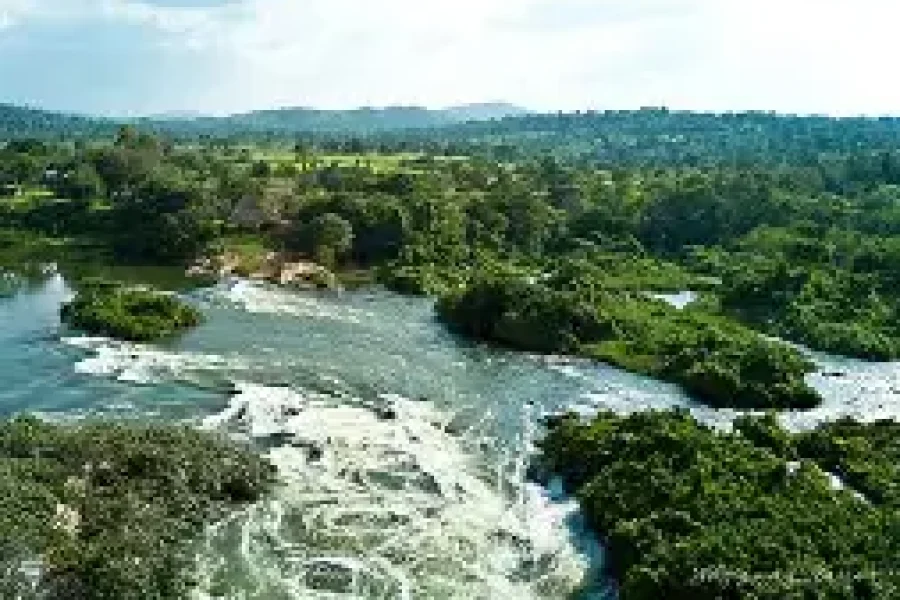
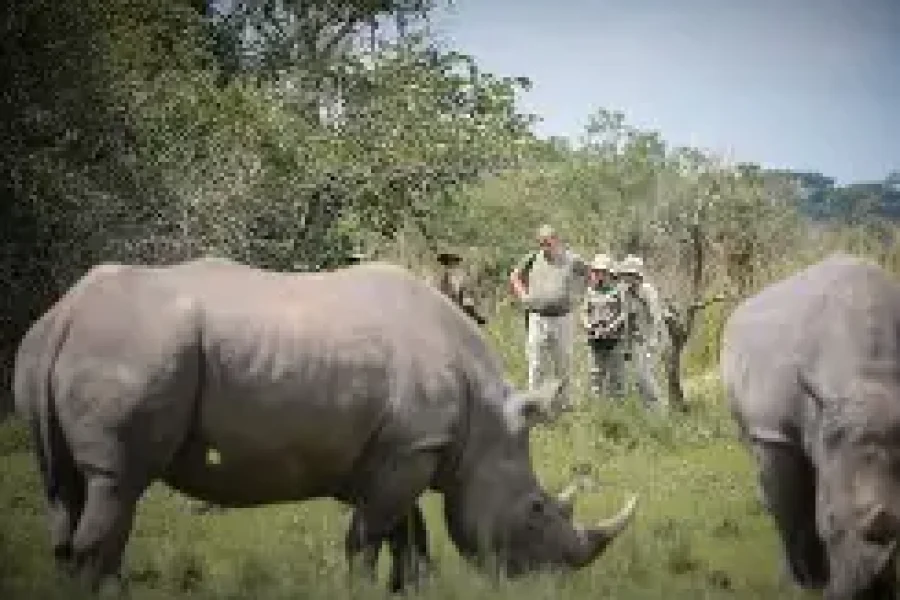
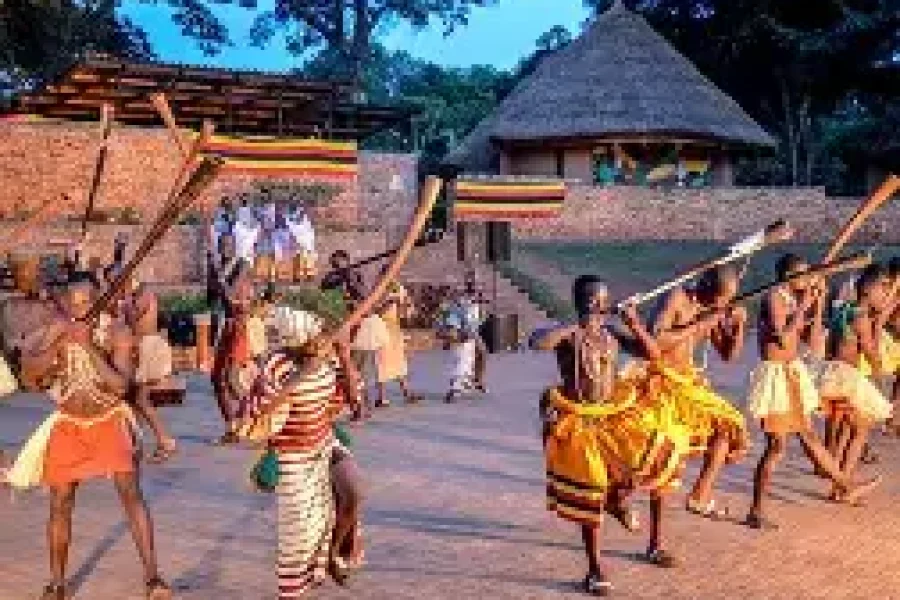
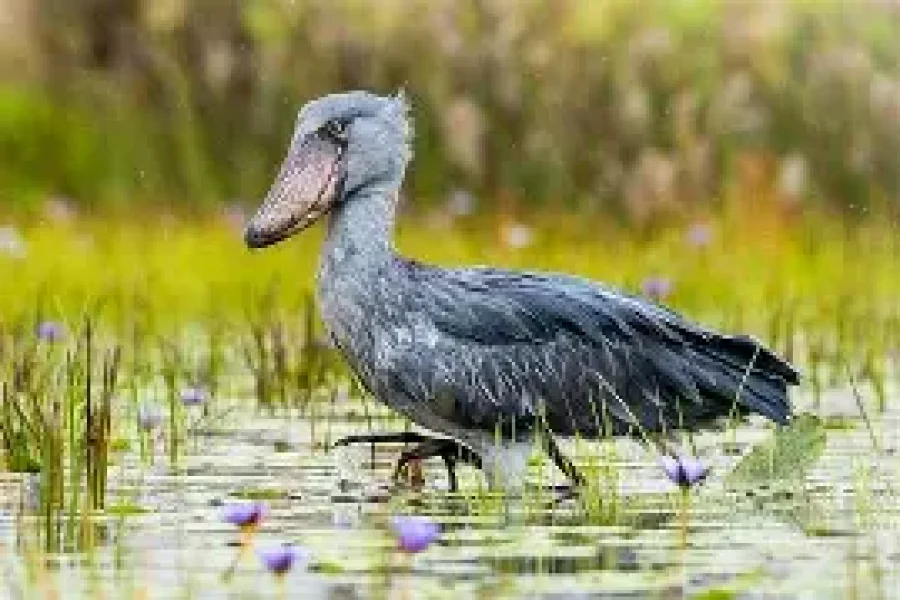
Leave a review